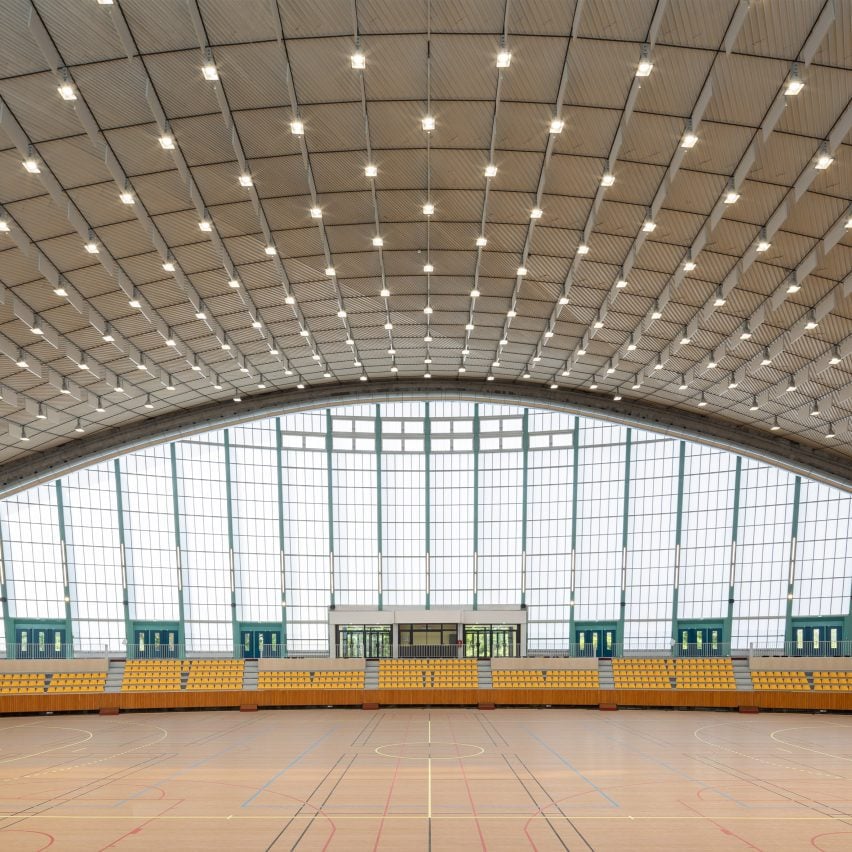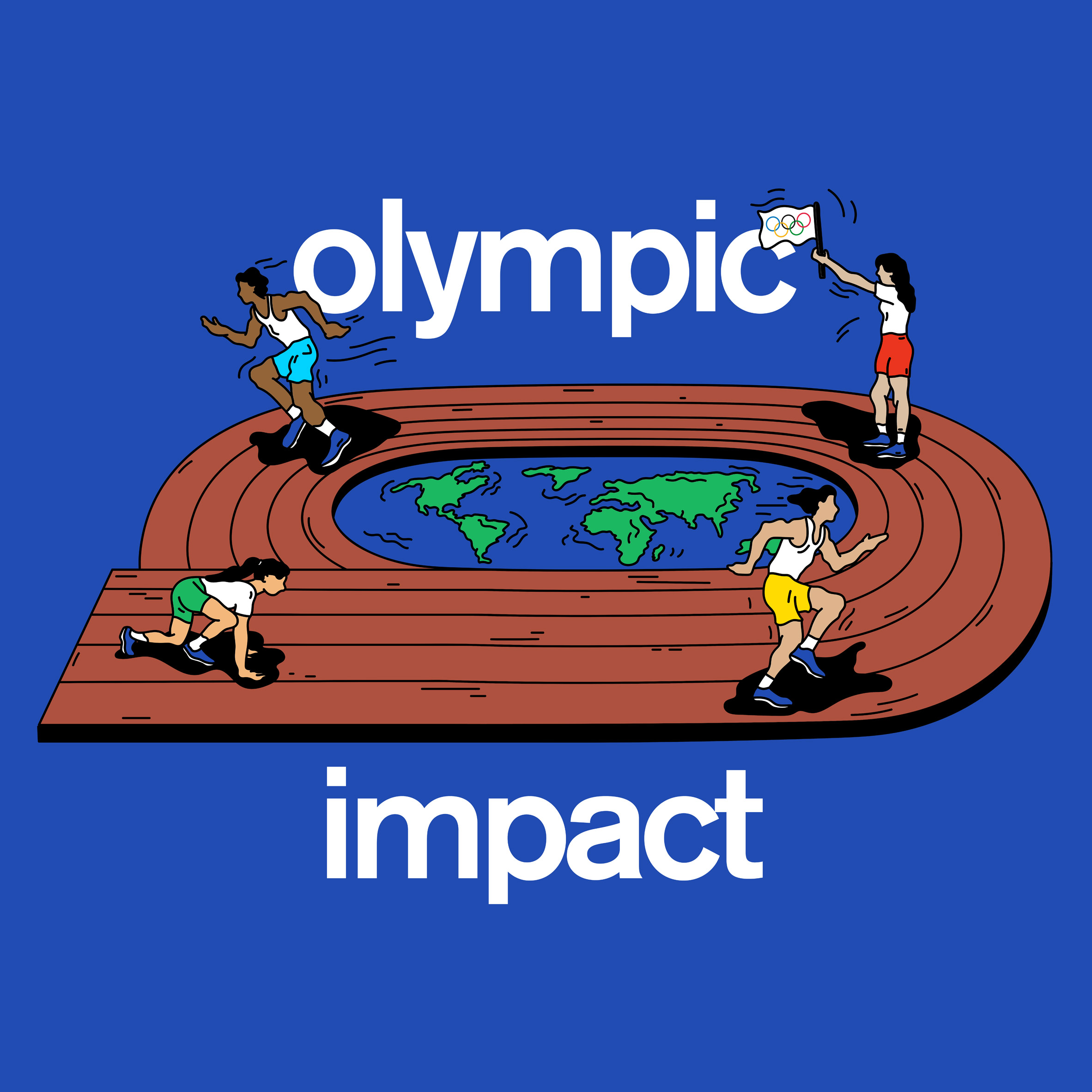"The fascinating element of these Olympics are their ephemeral nature as well as their lasting impact"
François Chatillon reflects on the architectural legacy of the Paris 2024 Olympic Games as part of our Olympic Impact series. The Olympics go hand-in-hand with architecture, with leading designers creating some of the most innovative and exceptional buildings, stadiums and public spaces of our times. From the "Bird's Nest" Olympic Stadium in Beijing by Herzog
The post "The fascinating element of these Olympics are their ephemeral nature as well as their lasting impact" appeared first on Dezeen.

François Chatillon reflects on the architectural legacy of the Paris 2024 Olympic Games as part of our Olympic Impact series.
The Olympics go hand-in-hand with architecture, with leading designers creating some of the most innovative and exceptional buildings, stadiums and public spaces of our times. From the "Bird's Nest" Olympic Stadium in Beijing by Herzog & de Meuron and Ai Weiwei to the Lee Valley Velodrome in London by Hopkins Architects, many of the most striking contemporary stadiums have been created in the name of the Olympic Games.
It may also be forgotten by many that from 1912 to 1948, the International Olympic Committee (IOC) handed out medals across five creative arts categories including architecture, alongside painting, sculpture, literature and music. So, it is no surprise that innovative architecture still plays such an important role.
Unlike other games, some of these venues will never be used for sporting events again
However, there is a persistent issue with Olympic developments. What happens after the spectacle of the games has finished? Will these new "villages" become thriving new districts integrated into the fabric of the city, or become derelict monuments to the past, left forgotten and unloved?
The approach of Paris 2024 has drawn a lot of attention, with many (rightly) crediting the strategy to embrace a more sustainable Olympics, one that incorporates the events into existing structures and uses temporary stands that can be re-used in the future.
As part of these Olympics we have worked on two projects: the Grand Palais and the Grande Nef de l'Île-des-Vannes (pictured), the former to be used for fencing and taekwondo and the latter to be used as a training complex.
I think the interesting factor about these projects and many others across the city is not that they will be used as venues during the games – which is great – but that the Olympics have acted as a catalyst for long-term change and adaptation, ensuring these buildings will become functioning parts of the city for many years to come.
To me, the fascinating element of these Olympics is both their ephemeral nature as well as their lasting impact. Unlike other games that have come before, some of these venues will never be used for sporting events again, but the architectural advancements and restorations of these grand buildings will be seen by millions of Parisians and tourists in the future.
The Grand Palais is an interesting project, with three main buildings, each created by a different architect and overseen by a fourth one, with ad-hoc separations inserted over time and areas closed off due to visitor safety. Therefore, the visitor journey hasn't been treated in recent memory as one building, but instead as different areas that have not spoken to each other.
We see our work as turning a public icon into a truly public building
Our work on the Grand Palais was not centred on the Olympics, but instead on making the building a cohesive experience, enabling all areas to operate to their full potential. This will include the games this summer but also a variety of events in the future, as well as permanent public access.
We see our work as turning a public icon into a truly public building, one that visitors can now experience rather than simply marvel at from afar.
For Grande Nef de l'Île-des-Vannes, it was about turning a forgotten building back into a functioning part of the local community. It is one of the truly great buildings of Paris, with a sweeping parabolic roof that is an engineering feat of its time.
We have now been able to improve its failing energy efficiency and accessibility issues – the reason it closed in 2018 – to make it a qualified training facility for both the Olympic and Paralympic Games, but more importantly an ongoing sports complex for the local community after the Olympics have been and gone.
At the other end of the spectrum, you have the temporary stands gracing the gardens of the Eiffel Tower and skateboard ramps occupying Place de la Concorde – truly a once in a lifetime experience for those that attend. A stadium seemingly there one day and gone the next.
In all of these cases, they are not just sensitive refurbishments or temporary stands placed within famous locations. The plan is to embed the Olympic experience within the city of Paris.
It is important that each Olympics feel unique
To me, that is the most important thing about these games and should be the most important factor for future games. The architecture and the experience should feel part of the city, not a new district on the outskirts that sometimes feels connected in its look and feel and other times not.
As we have seen with Paris 2024, this approach has offered opportunities for experimental structures and formats, and also sped up the process for restorations and adaptations of both historic and contemporary buildings.
The legacy of the games is often discussed, and I think for Paris 2024 this will feel obvious in the future, not just in terms of design and architecture but a new type of Olympic experience, one that feels truly unique to the host city.
In Paris, especially the centre of the city, new buildings are greeted with a lot of scrutiny. We are an old city with many historic buildings and new additions need to be carefully considered. So, in this case, these Olympics feel right for Paris. Why compete with the history of the city when you can incorporate it?
On the other hand, Paris is not just a historic cultural centre, it is also a very contemporary and thriving city in so many ways, so challenging the traditional format and ensuring considerations about the environmental impact also feels very Parisian.
This approach and delivery won't be right for all locations, and it is important that each Olympics feel unique and part of that particular city. Complacency and repetition will always fight against innovation. Going back to the origins of Olympic medals for the creative industries, innovative architecture should be a key contribution to the Olympics – whether that is new or old.
In 2024, Paris itself is the most important factor that will define the Olympics look, feel and experience, and at the next games in 2028, Los Angeles should be the most important factor.
François Chatillon is founder of French architecture studio Chatillon Architectes.
The photo is by Antoine Mercusot.

Olympic Impact
This article is part of Dezeen's Olympic Impact series examining the sustainability measures taken by the Paris 2024 Olympic and Paralympic Games and exploring whether major sporting events compatible with the climate challenge are possible.
The post "The fascinating element of these Olympics are their ephemeral nature as well as their lasting impact" appeared first on Dezeen.
